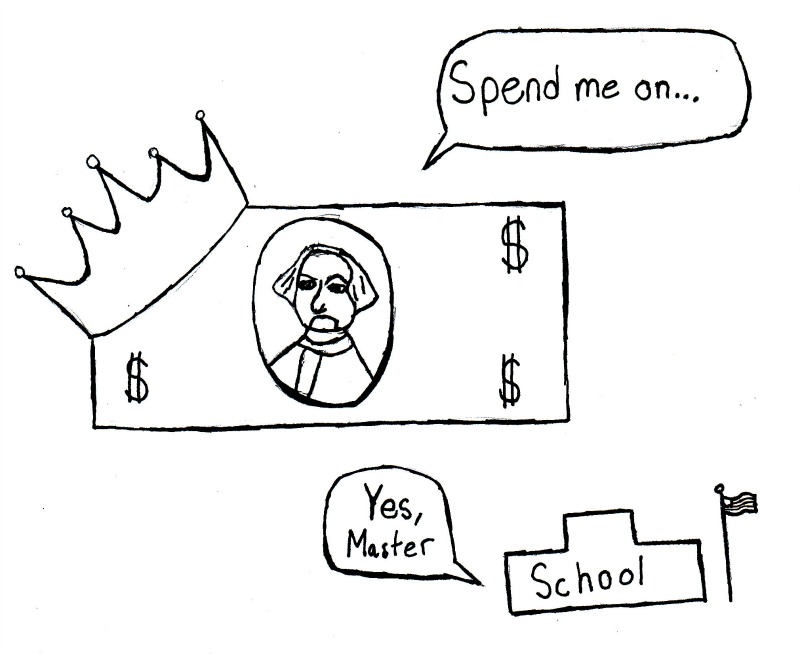Money rules our lives. Virtually nothing can happen in this society without the use of money. This is especially true on the topic of public schooling. The government only gives schools so much money to divvy up between their athletics, and somehow in the turbulence of funding, the balance between education and athletics has become uneven— tipped against education.
In total, Freedom Area School District (FASD) spent $452,757 on athletics in the 2013-14 school year. A large portion of this budget is spent paying coaches, officials, announcers and on other expenses. Entry dues and fees take $22,600 from this number, transportation has $41,501 allotted and $84,530 goes towards supplies.
On the contrary, FASD contributes no money to its clubs. Yes, it’s true: there is absolutely no funding towards clubs of any kind, even for clubs such as DECA, National Honor Society, and Science Club.
The purpose of an education is to learn, but based off of the budgeting of money, school is meant to encourage students to play sports because it is the only way for one to be rewarded financially. Schools spend a tremendous amount of money on athletics, but other clubs are responsible for their own fundraising. Colleges give out money left and right for athletes instead of giving money to students that will give a good reputation to their school.
Athletics are an important aspect of the society in which we live. Encouraging young children to become involved with physical activity promotes healthy lifestyle choices and, how to work better with others. However, this does not mean that the education aspect of school should be neglected.
Even in the job market, employers look for people who are most qualified for the job. This decision usually falls on their educational backgrounds—how smart they are. So, why then are schools paying so much for non-educational activities?
Despite the money, sports do offer many benefits. They help developing teens and children gain essential life skills such as communication, collaboration, time management, responsibility, hand-eye coordination and much more.
In contrast, according to ClearedToPlay.org Inc., “High school athletes suffer 2 million injures, 500,000 doctor visits and 30,000 hospitalizations each year.”
Why should taxpayers be paying for schools to encourage children (with developing brains and organs) to play sports and injure themselves only to find that those injuries require medical attention? Then, those monies are put towards healing the injuries while those children lose brainpower in the process, therefore lessening their learning capabilities and the amount of scholarships available due to their lower grades. This requires more money out of the parents’ pockets, restricting their children from attending prestigious schools as well as the jobs they can get in the future. These students now make a lower income and it is more difficult to support a family.
Obviously the outcome is unrealistic, but the process is reality. How can anyone reasonably support what goes on in this system? Schools should be funding things that do matter: education.
Though many clubs are purely recreational and social, there are many clubs at Freedom that will help students that are interested in their futures.
Soccer, football, and other sports are funded through the regular season as well as when they make it to playoffs. In contrast, clubs do not even get the preliminary funding.
On the bright side, we can thank the coaches and coordinators for cutting down on expenses. Three years ago, the swimming and golf teams were going to be eliminated, but other sports teams cut out a total of approximately $44,000 to save these sports.
FASD “trimmed the budget 10% last year,” Athletic Director Mr. John Rosa said. “[We are] trying to save taxpayer money just by being smarter with our spending.”
Athletics are not to be blamed for the lack of funding for extracurriculars. In fact, many students that participate in these activities are also members of Freedom’s various athletic teams.
A balance between athletics and extracurriculars must be found. Surely there is a way to allocate district funds to meet the extracurricular needs of all students regardless of their interests.
STAFF EDITORIAL: Show me the money: What is our budget funding?
FHS Press Staff
•
October 31, 2013



